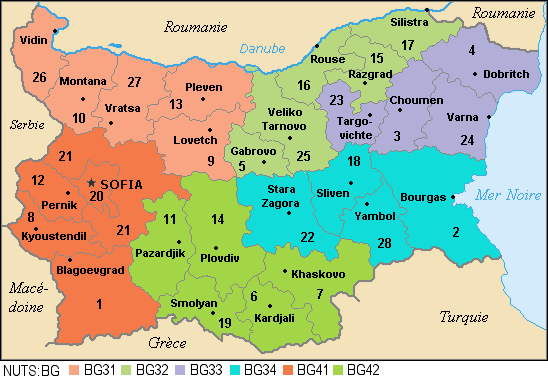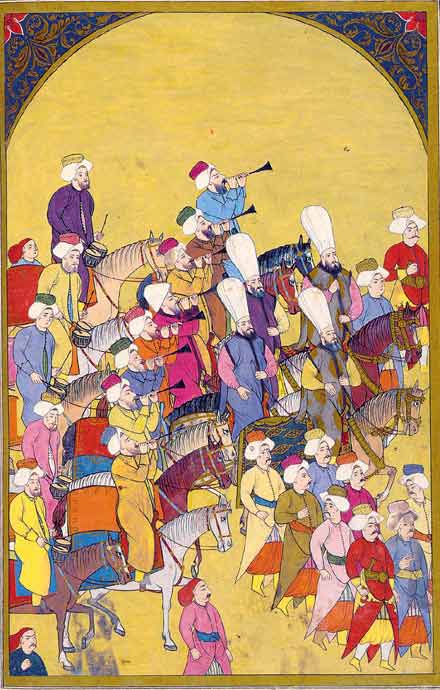|
Popintsi
Popintsi ( bg, Попинци) is a village in southern Bulgaria, part of Panagyurishte municipality, Pazardzhik Province. It is located 17 km south of Panagyurishte and 26 km north of Pazardzhik, on both banks of the Luda Yana River. the population is 2,383. There is a small workshop of Optix, a Panagyurishte-based optical and lens producing firm. The village lies at 407 m above sea level at the foot of the Sredna Gora mountain range, at . As of 2005 the mayor is Mariya Shopova. Geography The village is situated in the Sredna Gora plains, and is around 20 km. from Panagyurishte. It is near the river Luda Yana. Some of the villagers call the village "The Spigot" (), while others simply call it "The Village" (). The village is known as being very hospitable. An area named Petelovo is located near the village—large amounts of gold and other precious metals have been found there before. History The exact date of the village's establishment is unknown, but it is ... [...More Info...] [...Related Items...] OR: [Wikipedia] [Google] [Baidu] |
Panagyurishte
Panagyurishte ( bg, Панагюрище, also transliterated ''Panagjurište'', ) is a town in Pazardzhik Province, Southern Bulgaria, situated in a small valley in the Sredna Gora mountains. It is 91 km east of Sofia, 43 km north of Pazardzhik. The town is the administrative centre of the homonymous Panagyurishte Municipality. Panagyurishte is an important industrial and economic center. According to the 2021 census, it has a population of 15,275 inhabitants. https://nsi.bg/bg/content/2975/%D0%BD%D0%B0%D1%81%D0%B5%D0%BB%D0%B5%D0%BD%D0%B8%D0%B5-%D0%BF%D0%BE-%D0%BE%D0%B1%D0%BB%D0%B0%D1%81%D1%82%D0%B8-%D0%BE%D0%B1%D1%89%D0%B8%D0%BD%D0%B8-%D0%BC%D0%B5%D1%81%D1%82%D0%BE%D0%B6%D0%B8%D0%B2%D0%B5%D0%B5%D0%BD%D0%B5-%D0%B8-%D0%BF%D0%BE%D0%BB History In the Middle Ages there was a settlement near the modern town, near the fortress of Krasen some 6 km south of the current location. In the course of the Bulgarian-Ottoman Wars large part the population was killed and the rest ... [...More Info...] [...Related Items...] OR: [Wikipedia] [Google] [Baidu] |
Panagyurishte Municipality
Panagyurishte Municipality is located in the Pazardzhik Province, western Bulgaria. It is one of the 11 municipalities in the province. Its territory is 598,5 km² being fourth in the province after the municipalities of Velingrad, Batak and Pazardzhik. The relief is mountainous and semi-mountainous and is part of Sredna Gora. There are rich copper deposits, with the biggest mines located in Asarel Medet, Elshitsa and Mina Radka. There are dense forests in which mushrooms and berries are abundant. Many animals inhabit these forest. The most important game species are red deer, roe deer, wild boar, doe and mouflon. Demography As of 2005 the population is 29 924. They live in one town, Panagyurishte and nine villages: Popintsi, Oborishte, Bata, Banya, Poibrene, Levski, Panagyurski kolonii, Elshitsa and Srebrinovo. Religion According to the latest Bulgarian census of 2011, the religious composition, among those who answered the optional question on religious identifica ... [...More Info...] [...Related Items...] OR: [Wikipedia] [Google] [Baidu] |
Luda Yana River
The Luda Yana ( bg, Луда Яна, "Crazy Yana") is a 74 km-long river in southern Bulgaria, a northern tributary of the Maritsa River. It runs through the towns of Panagyurishte and Strelcha, as well as a number of villages, including Popintsi, where there are considerable driftage gold deposits. The river flows into the Maritsa several kilometres east of Pazardzhik, at the village of Sinitovo Sinitovo () is a village in central Bulgaria. It is located 5 km. east of Pazardzhik. As of 2005 the population was 2160. It is located at an altitude of in a fertile agricultural region near the Maritsa river. The main products grown in the are .... References Rivers of Bulgaria Landforms of Pazardzhik Province {{Bulgaria-river-stub ... [...More Info...] [...Related Items...] OR: [Wikipedia] [Google] [Baidu] |
Provinces Of Bulgaria
The provinces of Bulgaria ( bg, области на България, oblasti na Bǎlgarija) are the first-level administrative subdivisions of the country. Since 1999, Bulgaria has been divided into 28 provinces ( bg, области, links=no – ''oblasti;'' singular: – '' oblast''; also translated as "regions") which correspond approximately to the 28 districts (in bg, links=no, окръг – '' okrǎg'', plural: – ''okrǎzi''), that existed before 1987. The provinces are further subdivided into 265 municipalities (singular: – '' obshtina'', plural: – ''obshtini''). Sofia – the capital city of Bulgaria and the largest settlement in the country – is the administrative centre of both Sofia Province and Sofia City Province (Sofia- grad). The capital is included (together with three other cities plus 34 villages) in Sofia Capital Municipality (over 90% of whose population lives in Sofia), which is the sole municipality comprising Sofia City province. Term ... [...More Info...] [...Related Items...] OR: [Wikipedia] [Google] [Baidu] |
Necropolis
A necropolis (plural necropolises, necropoles, necropoleis, necropoli) is a large, designed cemetery with elaborate tomb monuments. The name stems from the Ancient Greek ''nekropolis'', literally meaning "city of the dead". The term usually implies a separate burial site at a distance from a city, as opposed to tombs within cities, which were common in various places and periods of history. They are different from grave fields, which did not have structures or markers above the ground. While the word is most commonly used for ancient sites, the name was revived in the early 19th century and applied to planned city cemeteries, such as the Glasgow Necropolis. Necropoli in the ancient world Egypt Ancient Egypt is noted for multiple necropoleis. Ancient Egyptian funerary practices and beliefs about the afterlife led to the construction of several extensive necropoleis to secure and provision the dead in the hereafter. These necropoleis are therefore major archaeological si ... [...More Info...] [...Related Items...] OR: [Wikipedia] [Google] [Baidu] |
Banitsa
Banitsa ( bg, баница, , also transliterated as banica and banitza) is a traditional pastry dish made in Bulgaria, North Macedonia and Southeastern Serbia (where it may also be referred to as gibanica), prepared by layering a mixture of whisked eggs, natural yogurt and pieces of white brined cheese between filo pastry and then baking it in an oven. Traditionally, lucky charms are put into the pastry on certain occasions, particularly on New Year's Eve. These charms may be coins or small symbolic objects (e.g., a small piece of a dogwood branch with a bud, symbolizing health or longevity). More recently, people have started writing happy wishes on small pieces of paper and wrapping them in tin foil. Wishes may include happiness, health, or success throughout the new year (similar to fortune cookies). Banitsa is served for breakfast with plain yogurt, ayran, or boza. It can be eaten hot or cold. Some varieties include banitsa with spinach "спаначник" () or the sweet ... [...More Info...] [...Related Items...] OR: [Wikipedia] [Google] [Baidu] |
Eastern Orthodox Church
The Eastern Orthodox Church, also called the Orthodox Church, is the second-largest Christian church, with approximately 220 million baptized members. It operates as a communion of autocephalous churches, each governed by its bishops via local synods. The church has no central doctrinal or governmental authority analogous to the head of the Roman Catholic Church—the Pope—but the Ecumenical Patriarch of Constantinople is recognized by them as ''primus inter pares'' ("first among equals"), which may be explained as a representative of the church. As one of the oldest surviving religious institutions in the world, the Eastern Orthodox Church has played a prominent role in the history and culture of Eastern and Southeastern Europe. The Eastern Orthodox Church officially calls itself the Orthodox Catholic Church. Eastern Orthodox theology is based on holy tradition, which incorporates the dogmatic decrees of the seven ecumenical councils, the Scriptures, and the tea ... [...More Info...] [...Related Items...] OR: [Wikipedia] [Google] [Baidu] |
Chapel
A chapel is a Christian place of prayer and worship that is usually relatively small. The term has several meanings. Firstly, smaller spaces inside a church that have their own altar are often called chapels; the Lady chapel is a common type of these. Secondly, a chapel is a place of worship, sometimes non-denominational, that is part of a building or complex with some other main purpose, such as a school, college, hospital, palace or large aristocratic house, castle, barracks, prison, funeral home, cemetery, airport, or a military or commercial ship. Thirdly, chapels are small places of worship, built as satellite sites by a church or monastery, for example in remote areas; these are often called a chapel of ease. A feature of all these types is that often no clergy were permanently resident or specifically attached to the chapel. Finally, for historical reasons, ''chapel'' is also often the term used by independent or nonconformist denominations for their places of wor ... [...More Info...] [...Related Items...] OR: [Wikipedia] [Google] [Baidu] |
Middle Ages
In the history of Europe, the Middle Ages or medieval period lasted approximately from the late 5th to the late 15th centuries, similar to the post-classical period of global history. It began with the fall of the Western Roman Empire and transitioned into the Renaissance and the Age of Discovery. The Middle Ages is the middle period of the three traditional divisions of Western history: classical antiquity, the medieval period, and the modern period. The medieval period is itself subdivided into the Early Early may refer to: History * The beginning or oldest part of a defined historical period, as opposed to middle or late periods, e.g.: ** Early Christianity ** Early modern Europe Places in the United States * Early, Iowa * Early, Texas * Early ..., High Middle Ages, High, and Late Middle Ages. Population decline, counterurbanisation, the collapse of centralized authority, invasions, and mass migrations of tribes, which had begun in late antiquity, continued i ... [...More Info...] [...Related Items...] OR: [Wikipedia] [Google] [Baidu] |
Ivan Shishman Of Bulgaria
Ivan Shishman ( bg, Иван Шишман) ruled as emperor (tsar) of Bulgaria in Tarnovo from 1371 to 3 June 1395. The authority of Ivan Shishman was limited to the central parts of the Bulgarian Empire. In the wake of the death of Ivan Alexander, the Bulgarian Empire was subdivided into three kingdoms among his sons, with Ivan Shishman taking the Tаrnovo Kingdom situated in central Bulgaria and his half brother Ivan Sratsimir holding the Vidin Tsardom. Although his struggle to repel the Ottomans differentiated him from the other rulers on the Balkans like the Serbian despot Stephan Lazarevic who became a loyal vassal to the Ottomans and paid annual tribute and participated in all of the Ottoman campaigns subsequent to the battle of Kosovo, contributing a 5,000 strong contingent of christian knights. Although Ivan Shishman has been categorized as indecisive and inconsistent in his policy in the past, this was done with little regard for an understanding of the context of the ... [...More Info...] [...Related Items...] OR: [Wikipedia] [Google] [Baidu] |
Ottoman Bulgaria
The history of Ottoman Bulgaria spans nearly 500 years, from the conquest by the Ottoman Empire of the smaller kingdoms emerging from the disintegrating Second Bulgarian Empire in the late 14th century, to the Liberation of Bulgaria in 1878. As a result of the Russo-Turkish War (1877–1878), the Principality of Bulgaria, a self-governing Ottoman vassal state that was functionally independent, was created. In 1885 the Ottoman autonomous province of Eastern Rumelia came under the control of and was unified with the Principality of Bulgaria. Bulgaria declared independence in 1908. Administrative organization The Ottomans reorganised the Bulgarian territories, dividing them into several vilayets, each ruled by a Sanjakbey or Subasi accountable to the Beylerbey. Significant parts of the conquered land were parcelled out to the Sultan's followers, who held it as benefices or fiefs (small ''timars'', medium ''ziyamet'' and large ''hases'') directly from him, or from the Beylerbe ... [...More Info...] [...Related Items...] OR: [Wikipedia] [Google] [Baidu] |







